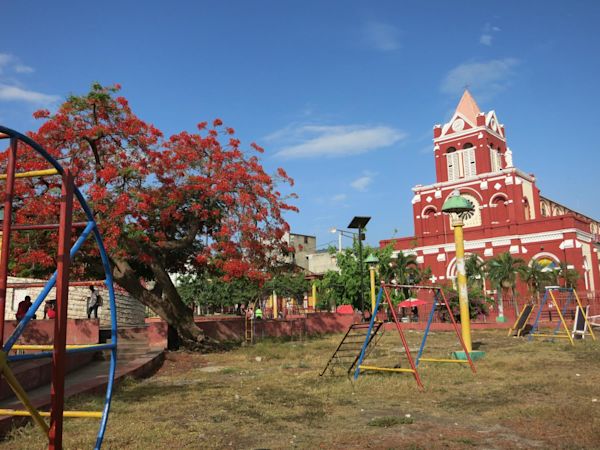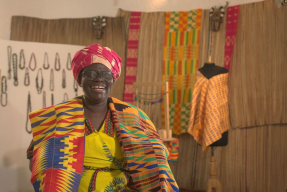How microfinance helps Haiti recover from natural disasters
August 30, 2018
I dedicated the last few weeks of my fellowship to traveling to rural Haiti and meeting some of Zafèn’s borrowers. Out of the ten borrowers I visited, eight of them were a part of Village Savings and Loan Associations (VSLAs) which represent the informal micro-finance organisations of the country. Meeting these borrowers is a fantastic opportunity when it comes to understanding Haiti's financial system and Zafèn's crucial work within the system.
Introduced in Haiti in 2014 by the NGO "Care", VSLAs are self-managed groups of 20 to 30 individuals that meet on a regular basis to provide their members with a safe place to save their money and to access loans. It essentially works as a savings-led, community-based solution to financial exclusion. By meeting and contributing to the cashbox weekly, members increase the capital available for loans. Each loan that is taken out has to be approved by the association and has a three-month repayment schedule with an interest rate of 5%. When the cashbox is opened and split between all members, this interest allows a small benefit for everyone at the end of the year-long cycle. These savings are typically directed towards investments such as buying crops and livestock.
 Opening the cashbox at each meeting.
Opening the cashbox at each meeting. VSLAs are highly successful in Haiti, particularly in rural areas. Zanmi Kris, a VSLA I met with in Dame Marie, is very isolated from the formal banking system. The closest bank is a two and a half hours drive on one of the worst roads I have traveled through – I do not wish anyone to make that commute daily. Such a case, is not an exception. All groups I met with were at least an hour drive away from the nearest city.
In addition to this geographic distance, one must also add the social and economic barriers between VSLA members and the formal financial system. Several borrowers I had a chance to talk to, were adamant that they would not go to a bank. Banks are extremely difficult to access due to their paperwork requirements and initial capital or collateral. They also have an extremely bad reputation amongst the rural population, particularly in terms of poor practices when collecting repayments. As Louis, a borrower, explained, “There is a vicious circle of indebtedness when people go to banks.”
 Zanmi Kris Committee members
Zanmi Kris Committee membersZafèn, nevertheless, does a fantastic job working with these groups. By providing loans at the beginning of a cycle, when the cashbox is still relatively empty, Zafèn allows more loans to be taken, both in terms of amounts borrowed and the number of members reached. It also struck me that everywhere I went, Zafèn's loan officers were welcomed with open arms and a large smile. As for the officers, despite being in charge of covering large areas and working with many different associations, they know every one of the VSLA members and have personal connections with many of them. Zafèn is also facing its challenges with innovative solutions, the organisation is currently rolling out mobile banking to address the technical issues borrowers face when making repayments.
 Satellite view of the South of Haiti - Marked by a red cross are Port-au-Prince, the capital, as well as all cities mentioned in this post: Les Cayes, Jeremie and Dame Marie.
Satellite view of the South of Haiti - Marked by a red cross are Port-au-Prince, the capital, as well as all cities mentioned in this post: Les Cayes, Jeremie and Dame Marie. Most VSLA members I met were working as resellers or in agriculture. In Grand’Anse and the south, two regions extremely affected by hurricanes, borrowers explained that the disheartening consequences of such natural disasters on their lives and businesses. Sales go down when a hurricane hits and remain low even long after, rendering the business less profitable. Agriculture is often completely destroyed, whether it is crops or livestock.
Yet, with an acceptance of their reality, a strong focus on the present and a drive to build something for the future, their inner strength radiated as they spoke. “The hurricane came, it’s temporary. Life goes on”, said Edith, a chocolate maker. Hearing them tell their stories was a lesson of resilience. In another village, the committee explained that the local school was destroyed two years ago and they are still striving to find solutions so that their kids have a place to learn.
 Committee members of Fanm Vanyan VSLA
Committee members of Fanm Vanyan VSLA I met with Fanm Vanyan VSLA on my way back from Jeremie to Les Cayes. Yet again, another long and uncomfortable journey, but crossing rivers and discovering more of the beautiful countryside made it worthwhile. When I arrived to meet the group, I was exhausted, wondering where I would find the energy to engage with the committee. I should have known by then that each meeting gave me a shot of adrenaline – and this one was no exception.
The women I met were brimming with energy and excitedly talked about Fanm Vanyan. More than a VSLA, the association has supported the development of the village by partnering with various NGOs. Houses were built, the village was connected to electricity and generations of women are being supported by this association. They have suffered immense setbacks due to natural disasters, but they always seem to come up with new projects and ideas and a drive to power through life's challenges with a smile.
 Field entry in Grand’Anse
Field entry in Grand’Anse These VSLAs are just some of many groups, that both reinforce and exhibit the true resilience of the Haitian people by providing a support network and filling the gaps in the banking system.
Many thanks to the Zafèn team for helping me understand the need for such an informal banking system and for allowing me to meet such strong individuals.
To support these associations and other entrepreneurs in Haiti, head over here.
PREVIOUS ARTICLE
Teaching kids global citizenship with “Save, Spend, Lend” →NEXT ARTICLE
A rewarding journey to a Kiva borrower in Ghana →












